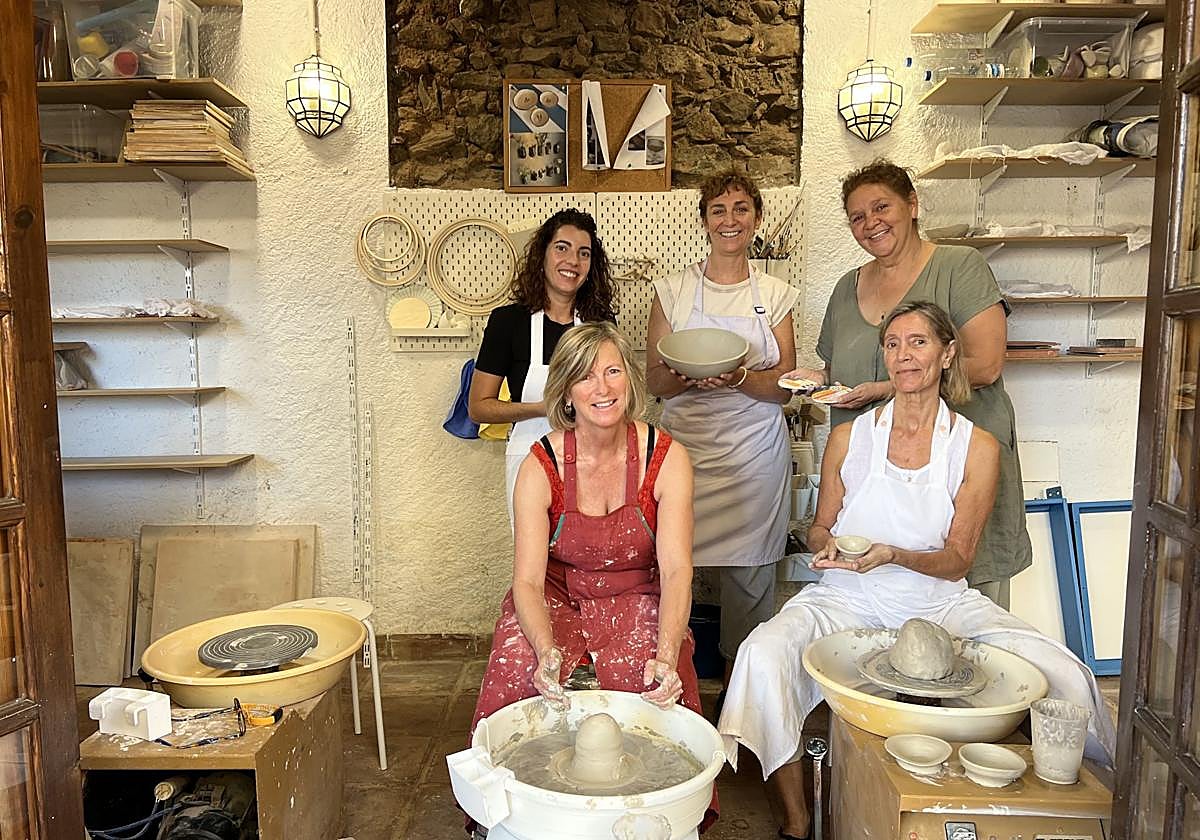Friday, 24 October 2025, 16:21
In a corner of the old town of Almuñécar on Granada’s Costa Tropical, the low hum of a potter’s wheel can be heard again. Around it, hands mould the clay with the same patience as they did hundreds of years ago. Almuñécar’s historic pottery has reopened its doors after years of silence, boosted by the restoration of the medieval wall and the town hall’s commitment to bring traditional trades back to life.
The person in charge of the reopening is Carmen Jiménez. She studied Artistic Ceramics at the School of Art in Granada and did her apprenticeship at the School of Ceramics in La Bisbal, in Gerona. Carmen describes the reopening of the pottery as “history, but also present and future”.
A few days ago, the mayor, Juan José Ruiz Joya, handed over the keys of the space to Carmen together with municipal representatives and Elena Navas. “Recovering this space is recovering a part of who we are,” said the councillor. “This centre not only rescues a trade, but also gives back to the town a place to learn, share and feel proud of our roots”.
Navas underlined the importance of the surroundings: “The potters’ quarter is a unique heritage enclave. Recovering it has been like giving back the pulse to a heart that had been asleep for a long time”.
The pottery trade in Almuñécar has its roots in the land and in history. In Roman times, the ancient Sexi Firmum Iulium, as Almuñécar was known, exported amphorae and crockery all over the Mediterranean. Throughout the centuries, entire families worked in these workshops in the San Miguel district, modelling jugs, dishes and water jugs that formed part of the everyday landscape of the town. Until the beginning of the twenty-first century, the space was a working pottery workshop run by the potter Amalia García del Moral, but it closed during the pandemic.
The atmosphere in the workshop is welcoming and family-like. Among the students there are beginners, local residents, artists and people who are simply interested in ceramics as a way of expressing themselves and disconnecting from the stresses of everyday life. One of them is Elisa Aneas who started almost by chance: “One day I passed by and saw Carmen working. I went in, painted a piece and got hooked. Now I’ve been doing ceramics for a year and I wouldn’t change it for anything. For me it’s therapy. You disconnect from the world and the hours fly by,” she says.
“After the pandemic we all need to touch, to create, to feel,” explains Carmen. In the pottery there are weekly classes, family workshops, initiation experiences and school activities. There are also plans to set up a small shop with handmade pieces.
The process, she says, always starts the same: kneading the clay to remove bubbles, centring it on the lathe, opening it with the thumbs, stretching it, shaping it. “It looks simple, but it’s an art,” she says. Then comes the drying, which must be slow, and the kiln, which reaches almost a thousand degrees. Some pieces are left in their natural colour, others are enamelled and return to the kiln a second time.
A tourist attraction
The recovery of the centre has also meant the creation of a new cultural and tourist space for Almuñécar. Councillor for culture and heritage, Alberto Manuel García Gilabert, describes it as “a place where art and history dialogue”. The restoration of the wall and the reopening of the workshop have made it possible to integrate the centre into a heritage itinerary that connects San Miguel castle, the archaeological museum and the historical routes guided by archaeologist Elena Navas. In its first weeks of activity, the workshop has already been visited by schoolchildren, local residents and visitors who have been able to participate in demonstrations and lathe workshops.
